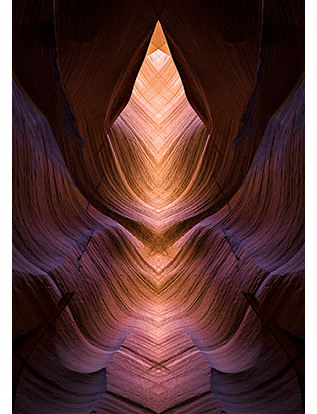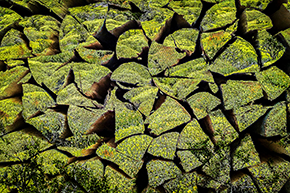
|
|
|
Featured Artist: Olaf Willoughby
On his website, olafwilloughby.com Olaf Willoughby describes himself as, "a photographer, writer, researcher and facilitator living in London." By any descriptor, he's a busy man — publishing ebooks, conducting workshops, judging photo exhibitions and assembling his own, involved in moderating the Leica Meet Group on Facebook, collaborating with other artists to stretch the boundaries of photography, and, oh yes, making a lot of photos. We caught up with him via FaceTime while he was in the midst of preparing for a number of upcoming events. Question: You have a lot going on right now. You're co-conducting a workshop next week at Maine Media Workshops with your frequent collaborator Eileen McCarney Muldoon. On the 26th, you and Eileen are doing a one-day workshop at the Leica Store in SoHo, Manhattan. The following day you're holding a Leica Meet event at the Store, and that evening your show, "Imaginary Landscapes," opens there. Is this a typical pace for you? I think at the moment it's quite busy, but this is becoming typical. Since the Leica Meet group exceeded 10,000 members, I tend to get people writing out of the blue — accomplished photographers who may be switching to Leica — asking genuine questions, and you want to share your knowledge. Then I have the workshops that I'm teaching with Eileen, and the shows. Shows need printing and proofing and writing an artist's statement. So this is getting to be the new normal. I'm quite busy, but it's not like real work. Question: Let's start at the beginning. When and how were you introduced to photography? What "hooked" you? Both parents were musicians. My father was a session musician, and to supplement his income he worked as a photographer for the Musical Express, which still exists today as the New Musical Express. So my introduction to photography was the aroma of developing chemicals coming from the bathroom, as he processed shots of concerts by people like Buddy Rich, Ella Fitzgerald, Mel Torme and the like. So I was hooked on the simple magic of the image appearing on a blank sheet of paper immersed in developer. Question: What was your first camera? How and when did you get it? My father gave me my first camera when I passed some school exam. It was an old, battered Minolta 35. With it I learned one of life's important photo lessons — how to use a camera manually. Actually I now realize that it was a lovely jewel, inspired by the Leica 111 and maybe that prompted my later interest in Leicas. Question: I'd like to come back to Leicas in a minute. But first tell us a little more about yourself. You describe yourself as writer, photographer, facilitator: Which came first? How did you get to where you are today? I started out as a planner in advertising agencies and had the good fortune to work with BBDO in Dusseldorf, Johannesburg and New York on a series of major brand name clients before setting up my own consultancy in London. The planner's role is to represent the voice of the consumer within the agency, so this involves a great deal of marketing research, interviews, writing, presenting and facilitating strategy sessions. So basically photography came last! Not that it ever disappeared. Even while working in the agency business I wrote occasional photo articles for UK consumer magazines. You know the kind of thing....'New England's Candy Store', about fall color... and so on. As time passed my marketing consulting diminished and my photography grew neatly to replace it. Question: You seem to be very prolific. How do you work? Do you favor certain types of photography, lenses, times of day, locations, etc.? Do you work in terms of projects? I wouldn't say 'prolific.' I'd say I'm anti being stuck in a rut. I think of photography as a love affair with Life. So I carry a camera with me pretty much all the time and shoot anything I find interesting. I also have a permanent list of projects which I work on. I shoot three or four times a week. When I go out, I'll plan a circuitous route to where I have to go and walk different ways to and from my destination. I did that yesterday walking along the quiet side of the river Thames and got three shots that I'm quite pleased with. I don't favor certain types of shooting, times of day or location. In fact I believe quite the opposite. I think we should always be open to a sense of creative play and experimentation. In workshops I often see quite accomplished photographers who travel the world basically taking the same shot over and over again. The question is: Are they in a groove or stuck in a rut? I'm constantly looking for different things to shoot. Question: You say you carry a camera almost all the time. I assume it's a Leica. Which models do you use? I use the Leica monochrome and a Leica SL. That's the more recent one with the 24 – 90mm zoom. Question: What's your take on the Leica mystique? For me the mystique boils down to two pragmatic benefits. Firstly, the user experience: The 'bulk' to quality ratio of a Leica M is the best on the market. By this I mean that it feels right in the hand, solid and well made, the controls and the UI are simple, and as a package it delivers terrific quality. Secondly, Leica lenses are the best, or equal the best, in the world. A Phase One MF 100 megapixel back may deliver better resolution, but I find it hard to get along with that clunky camera derived from the Mamiya 645. I know the Sony range has smaller and lighter cameras with more megapixels, but again, all those buttons, bells and whistles! That's why I talk about the 'feel' and the experience: The quality ratio is just right for me. Question: I see you have a gallery of iPhone photos on your site, so you shoot with a phone too. How does that fit in? I know it has been said before, but the iPhone is like a visual notebook. On a day when I'm out and I don't have the Leica with me, then I'm perfectly happy to use the iPhone and process the heck out of it with one of the thousands of apps available. It's just fun. I want to add that even though I carry a Leica, I'm not keen on the photo kit one-ups-manship you encounter. The new Hasselblad and the Phase One will deliver absolutely stunning quality, I'm sure. But I think it is a case of having to look at all this and deciding where you are on the spectrum. Question: You're very involved in the Leica Meet Facebook group. I believe you are one of the founders. Tell us how that came about? The Leica Meet is a great example of accidentally stumbling into success. Our story started in August 2013 when a few Leica M photographers met up to walk along the South Bank of the Thames. Even though we had never met before, three of us hit it off straight away and decided to share our enthusiasm via a Leica Meet Facebook page. Shortly after, we added Eileen McCarney Muldoon as the fourth 'musketeer' and US representative. Today we have over 10,000 members from more than 50 countries and have arranged meets in London, New York, Paris, Boston and Wetzlar, Germany (home of the Leica). Leica is an iconic brand. Its users tend to be passionate about their photography and love to get together to see, shoot and share their work. The Leica Meet taps into that motivation. We are constantly in awe of the image quality of the work posted, even as we've grown, and that has helped us build a very strong relationship with Leica. Question: As we mentioned earlier, you have a vibrant creative collaboration with Eileen McCarney Muldoon. How did that come about? OK it's 8.30, Oct 2nd, 2011. I'm attending a photo workshop in Nepal and Tibet. On the first day the group meets in the foyer of the Shangri La Hotel. I'm introduced to Eileen. We all depart for a photo walk. Eileen and I go through the swing doors together and start chatting.... and stop 17 days later at the airport to say goodbye! I think occasionally in life we are blessed to meet people who have a real effect on our lives. We decided to collaborate on a whole series of projects including multiple exposures, using different art forms as photo stimulus, visual rhymes, etc., and published a book, "Visualizing Poetry." Our collaboration has developed us both as artists. It has given rise to the Lightdance workshops we co-teach and we are working now on further collaboration projects. Question: AutumnColor is making 16 of 18 prints for your show at the Leica Store. How did you come to work with Mark? I had met Mark, but not worked with him before. Preparing for this show, I spoke with Eileen and she told me, Mark is really good. It's not only the quality of his work, he's cooperative and enthusiastic about your work, too. I think there are probably quite a few studios that would produce decent quality work. But with some you have doubts and you're not totally convinced that you are going to see the print. With Mark, it is the quality of the relationship, too. You have the sense he is interested in your work and that he wants to do your work well. Question: Do you have some sense of an evolving direction of your photography? I suppose that my photography isn't going in one direction, but in many. It's more like an explosion, or like a firework. If there's an overall theme it is to be looser. My whole background was edge to edge sharpness, tripods and cable releases. My father's work had to be pin sharp for reproduction in magazines. But slowly I've gotten a lot looser, at least in some of my work, and I think that is common to a number of things that I'm doing. |
All photos this page © Olaf Willoughby  
|

| |||
Copyright ©  AutumnColor Digital Imaging AutumnColor Digital Imaging | | 70 Webster Street 70 Webster Street | | Worcester, MA 01603 Worcester, MA 01603 | | Toll Free: 800-533-5050 Toll Free: 800-533-5050 | | Fax: 508-757-2216 Fax: 508-757-2216
|
|||



